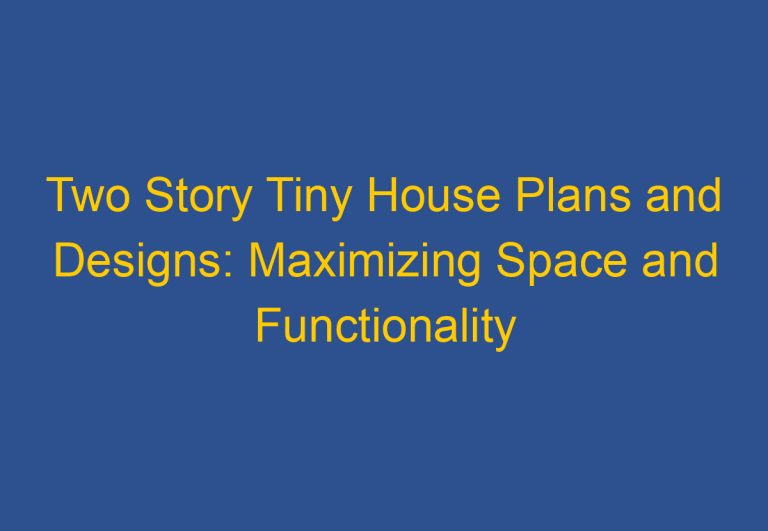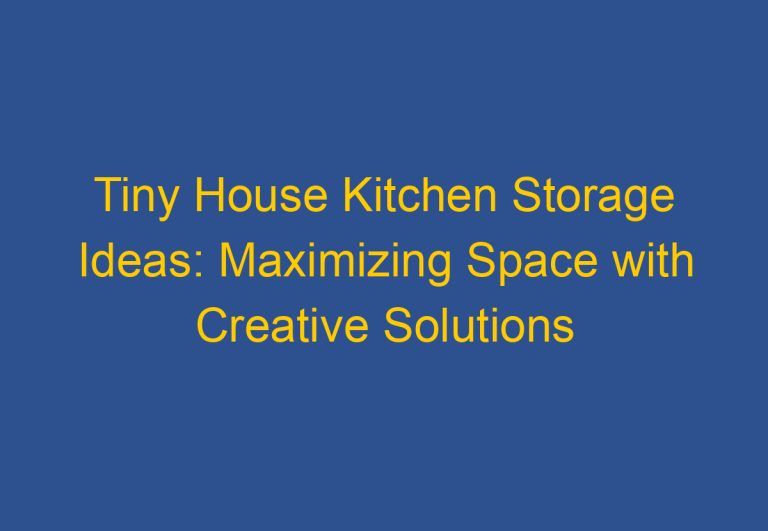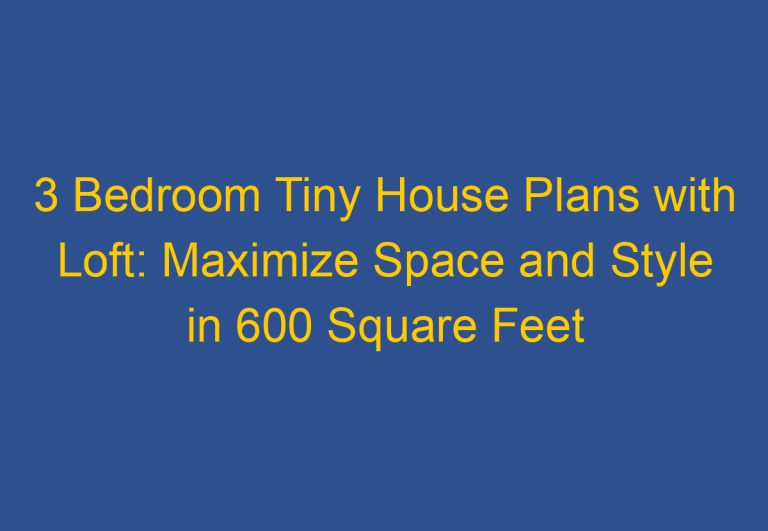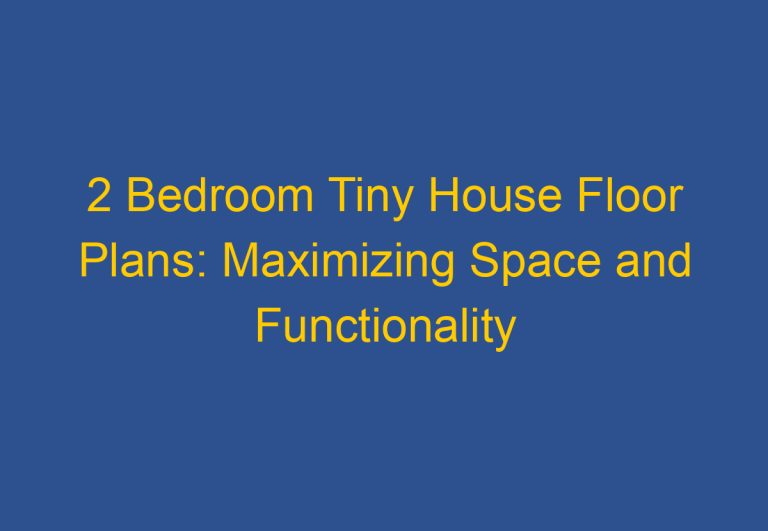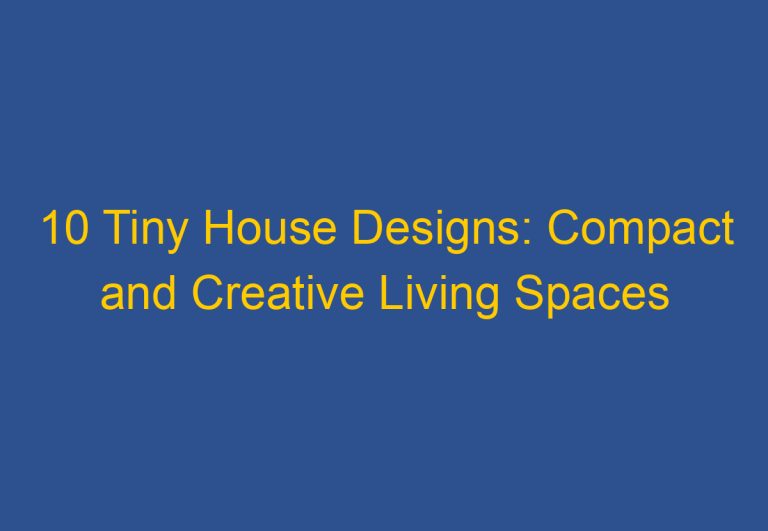How to Turn a Shed into a Tiny Home in NJ
Turning a shed into a tiny home is an exciting and rewarding project that can lead to a unique and personalized living space. If you’re in New Jersey and considering this transformation, you’re in the right place. This blog post will guide you through the steps of converting a shed into a tiny home in NJ, ensuring you comply with local regulations while creating a comfortable and stylish abode.
Why Convert a Shed into a Tiny Home?
Before diving into the how-to, let’s explore why converting a shed into a tiny home is a great idea:
- Cost-Effective: Compared to building a new home from scratch, converting a shed is significantly cheaper. You can save on construction costs and materials.
- Sustainability: Repurposing a shed minimizes waste and promotes sustainable living. Tiny homes generally have a smaller carbon footprint.
- Simplicity: Tiny homes encourage a minimalist lifestyle, helping you declutter and focus on what truly matters.
- Flexibility: A tiny home can serve various purposes, such as a guest house, home office, or even a rental property.
Step-by-Step Guide to Converting a Shed into a Tiny Home in NJ
1. Research Local Zoning Laws and Building Codes
Before you start any construction, it’s crucial to understand the local zoning laws and building codes in New Jersey. Different municipalities have varying regulations, so check with your local building department. Some areas may have restrictions on the size of tiny homes or require specific permits. For example, sheds and garages on lots where a single-family home exists can often be turned into accessory dwelling units (ADUs) (source).
2. Choose the Right Shed
Selecting the appropriate shed is a critical first step. Consider the size, structure, and condition of the shed. It should be large enough to accommodate your living needs and sturdy enough to withstand modifications. Popular choices include pre-fabricated sheds from retailers like Home Depot, which offer a variety of sizes and styles (source).
3. Build a Solid Foundation
A strong foundation is essential for any home. Depending on the condition of the existing shed, you may need to reinforce or replace the foundation. Options include concrete slabs, piers, or skids. Ensure the foundation is level and capable of supporting the weight of the shed and any additional structures.
4. Insulate and Weatherproof
Proper insulation and weatherproofing are crucial for comfort and energy efficiency. Use high-quality insulation materials for the walls, roof, and floor. Seal any gaps or cracks to prevent drafts and moisture intrusion. This step is especially important in New Jersey, where the climate can vary significantly throughout the year (source).
5. Install Electrical and Plumbing Systems
For a fully functional tiny home, you’ll need to install electrical and plumbing systems. This step may require professional assistance to ensure compliance with local codes and safety standards. Plan your electrical layout to include outlets, lighting, and appliances. For plumbing, consider the placement of the kitchen, bathroom, and any other water fixtures.
6. Design the Interior Layout
Designing the interior layout is one of the most exciting parts of the conversion process. Think about how you’ll use the space and what features are essential for your lifestyle. Consider multi-functional furniture, such as fold-out beds or tables, to maximize space. Use vertical storage solutions to keep the floor area open and uncluttered.
7. Add Heating and Cooling
New Jersey experiences a range of temperatures, so it’s important to include heating and cooling systems in your tiny home. Options include electric heaters, mini-split HVAC systems, or even wood stoves. Consider energy-efficient solutions to keep utility costs low and maintain a comfortable living environment year-round (source).
8. Finish the Interior
Once the structural and mechanical systems are in place, it’s time to finish the interior. This includes installing drywall or paneling, painting, and adding flooring. Choose durable and easy-to-clean materials that suit your style. Personalize the space with your favorite colors, textures, and decor.
9. Exterior Enhancements
Don’t forget the exterior! Enhance the curb appeal of your tiny home by painting the shed, adding landscaping, and installing outdoor lighting. Consider building a small deck or patio to extend your living space and create a welcoming entrance.
10. Furnish and Decorate
Finally, furnish and decorate your tiny home to reflect your personality and needs. Opt for space-saving furniture and creative storage solutions. Decorate with items that bring you joy and make the space feel cozy and inviting.
Legal Considerations and Permits
Converting a shed into a tiny home in NJ involves several legal considerations. Here are some key points to keep in mind:
- Permits: Depending on your location and the extent of the renovations, you may need various permits for construction, electrical, and plumbing work. Check with your local building department for specific requirements.
- Zoning: Ensure your tiny home complies with local zoning laws. Some areas have restrictions on the size and placement of accessory dwelling units.
- Inspections: Your tiny home will likely need to pass inspections to ensure it meets safety and building standards. Schedule inspections at different stages of the construction process.
Cost Breakdown
Understanding the costs involved in converting a shed into a tiny home can help you budget effectively. Here is a rough breakdown of potential expenses:
- Shed Purchase: $2,000 – $10,000 (depending on size and quality)
- Foundation: $1,000 – $5,000
- Insulation and Weatherproofing: $1,000 – $3,000
- Electrical and Plumbing: $2,000 – $10,000
- Interior Finishing: $1,000 – $5,000
- Heating and Cooling: $500 – $3,000
- Furnishing and Decor: $1,000 – $5,000
Total Estimated Cost: $8,500 – $41,000
These estimates can vary based on the materials used, the complexity of the work, and whether you hire professionals or do it yourself.
Tips for a Successful Conversion
- Plan Thoroughly: Take the time to plan every aspect of your conversion. This will help you stay on budget and avoid costly mistakes.
- Stay Flexible: Be prepared to adapt your plans as needed. Unexpected challenges may arise, and flexibility can help you navigate them smoothly.
- Prioritize Quality: Invest in high-quality materials and workmanship. This will ensure your tiny home is durable, comfortable, and safe.
- Seek Professional Help: Don’t hesitate to hire professionals for complex tasks like electrical and plumbing work. Their expertise can save you time and money in the long run.
- Enjoy the Process: Converting a shed into a tiny home is a creative and rewarding project. Enjoy the journey and take pride in your accomplishment.
Conclusion
Turning a shed into a tiny home in NJ is a feasible and fulfilling project that offers numerous benefits. By following the steps outlined in this guide and paying attention to local regulations, you can create a unique and comfortable living space that suits your needs and lifestyle. Whether you’re looking for a minimalist retreat, a guest house, or a rental property, a tiny home can provide a charming and efficient solution. So, roll up your sleeves and start transforming that shed into the tiny home of your dreams!

